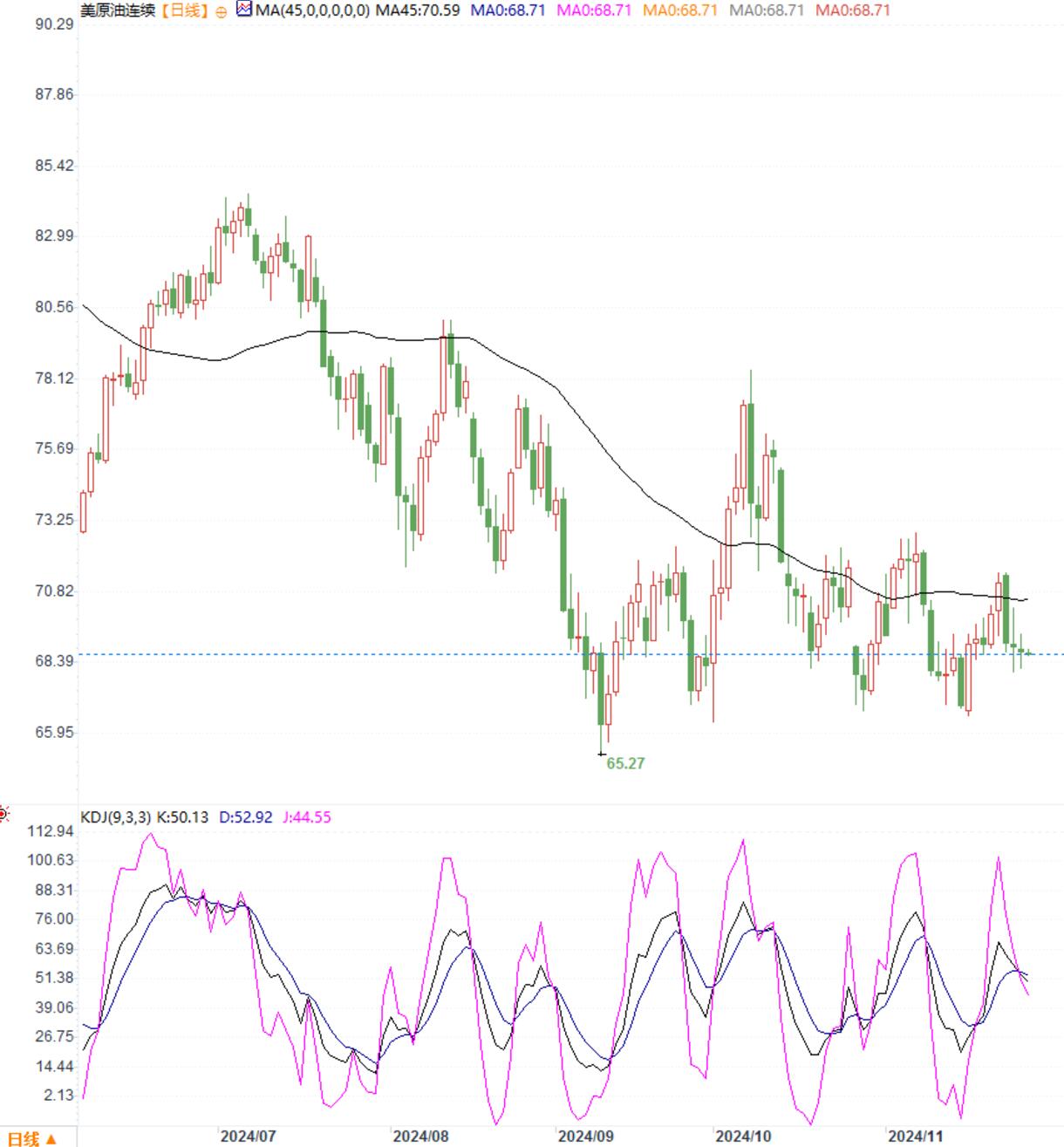EIA inventory bearish is limited, oil prices fluctuate, waiting for weekend OPEC+meeting
On Thursday (November 28), US crude oil fell slightly during the Asian trading session, trading around $68.70 per barrel. EIA inventory data showed that crude oil inventories decreased by 1.8 million barrels in the week ending November 22, with analysts expecting a decrease of 605000 barrels.
To some extent, it supports the bullish rebound of US crude oil, but it seems that oil prices are indifferent, and there is still no consensus in the market on fundamental feedback. Coupled with strong US economic data and strong growth in personal spending, inflation has almost stagnated.
The expectation of the Federal Reserve's December interest rate cut has further slowed down, which is unfavorable for bullish oil prices. The short-term fundamentals are chaotic, and today marks Thanksgiving with limited market volatility, waiting for new changes in fundamentals.
Trump's National Security Advisor is weighing and promoting the end of the Russia-Ukraine conflict
According to Reuters, two insiders said that in recent days, Michael Waltz, Trump's national security adviser, has been weighing several proposals to end the Russia-Ukraine conflict.
Although the specific details of the strategy are still being formulated, Trump officials may push for a ceasefire as soon as possible to temporarily freeze the conflict during negotiations between the two sides.
Firstly, there is the proposal of Kellogg, the candidate for the Russia Ukraine special envoy, that the precondition for continuing to provide military assistance to Ukraine is Kiev's participation in peace negotiations with Russia, as well as proposing a US policy of seeking a ceasefire and resolving the conflict through negotiations.
At the same time, Ukraine's desire to join NATO will be put on hold for a long time to encourage Russia to participate in negotiations.
The second proposal is supported by former US Ambassador to Germany Rick Grenier. Grenell had previously expressed support for the establishment of "autonomous regions" within Ukraine, although he did not explain in detail what this would look like.
Another idea is to allow Russia to retain the areas it currently controls in exchange for Ukraine joining NATO, but few in Trump's circle seem willing to invite Ukraine to join NATO in the short term.
The probability of the Federal Reserve cutting interest rates by 25 basis points in December has risen to 66.5%, up from around 59% the day before
According to CME's "Federal Reserve Watch", the probability of the Federal Reserve keeping current interest rates unchanged until December is 33.5%, and the probability of a cumulative 25 basis point rate cut is 66.5%.
The probability of maintaining the current interest rate unchanged until January next year is 26.3%, the probability of reducing interest rates by 25 basis points cumulatively is 59.5%, and the probability of reducing interest rates by 50 basis points cumulatively is 14.2%.
Consumer spending in the United States grew strongly in October, but progress in reducing inflation seems to remain stagnant
The slightly higher than expected increase in consumer spending in the United States in October suggests that the economy maintained most of its strong growth momentum in the early fourth quarter, but progress in reducing inflation in recent months seems to have stalled.
The failure to successfully push inflation back to the 2% target, coupled with the possibility of the incoming Trump administration imposing higher tariffs on imported goods, may lead to a reduction in the Federal Reserve's room for interest rate cuts next year.
The market still expects the Federal Reserve to cut interest rates for the third time in December, and other data released on Wednesday showed that more unemployed people fell into long-term unemployment in mid November.
David Russell, Global Head of Market Strategy at TradeStation, said, "December is still possible, but the possibility of further interest rate cuts in 2025 is decreasing
The Bureau of Economic Analysis of the US Department of Commerce announced that consumer spending, which accounts for more than two-thirds of US economic activity, increased by 0.4% in October. The surveyed economists had previously predicted a growth of 0.3%, and the growth rate in September was revised up to 0.6%, up from the previous value of 0.5%.
After adjusting for inflation, consumer spending increased slightly by 0.1%. Expenditure is largely driven by strong demand in the service industry.
On a technical level, the daily level volatility of US crude oil has decreased and remained within the range of box fluctuations, but the moving average has turned downwards and the KDJ indicator has fallen below the dead cross. It is not ruled out that there may be a possibility of testing the early low point around $67 again.

Daily chart of US crude oil
Tips:This page came from Internet, which is not standing for FXCUE opinions of this website.
Statement:Contact us if the content violates the law or your rights
